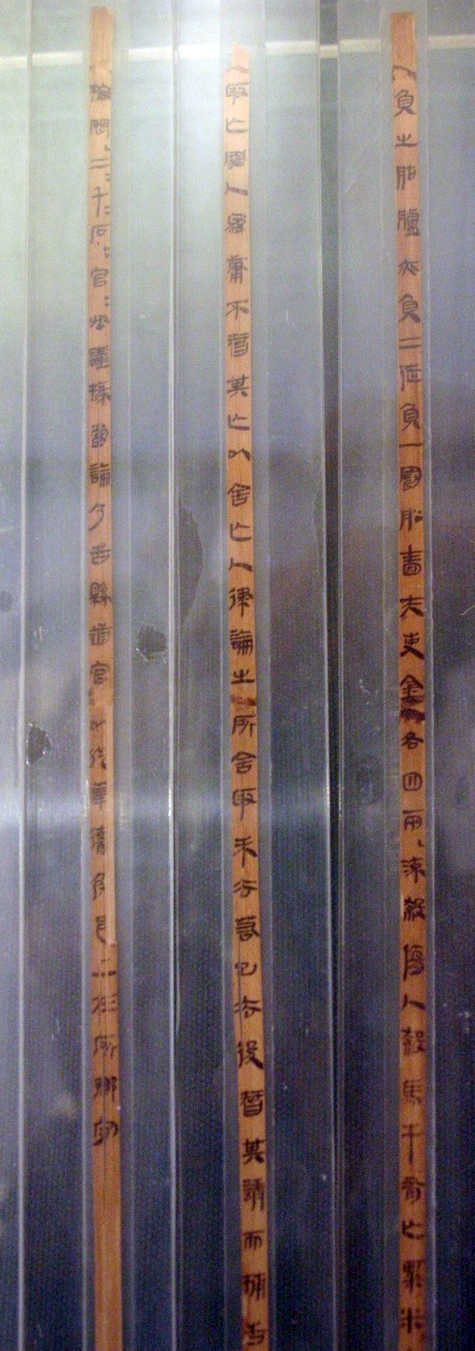

In an ancient tomb in China's Hubei Province, archeologists discovered a basket of medical, mathematical, and legal texts that date back to the late third and early second centuries B.C. A historian at UC Santa Barbara is working to translate and interpret the legal texts, of which there are two, and describes them as "a gold mine of social and legal history."
"The finds are unprecedented," said Anthony Barbieri-Low, an associate professor of history at UCSB. "They are as important as the Dead Sea Scrolls."
Although the texts were first discovered at the end of 1984, they weren't published in China until 2001 because the material, including the bamboo scrolls on which they were written, had broken down over time. "It took a while for Chinese scholars to conserve the materials and arrange the texts in proper order," Barbieri-Low said. It's taken even longer to get them translated into English.
Initially funded by a grant from the National Endowment for the Humanities, Barbieri-Low, an expert in the social, legal, and economic history of early imperial China, has taken on the task of translating the documents and making them accessible to lay audiences and non-specialists. "They're too important not to do that," he said. It is a painstaking process, however, that requires a huge amount of detective work and interpretation. "Part of the reason for that is the fragmentary condition of the texts," he continued. "Another part is the language itself. It is succinct, but also very loaded. Each word has to be dissected to understand what it means in the legal context."
Barbieri-Low is currently in the final stages of preparing a book manuscript, co-written with Robin D.S. Yates of McGill University. Forthcoming from the University Washington Press, the book will contain an annotated translation of both legal texts and an introduction to the legal process in ancient China.
According to Barbieri-Low, the two legal texts probably represent approximately 30 percent of the laws of ancient China. One of the texts contains a selection of statutes and a set of ordinances of the early Qin and Han empires. The statutes involve a wide range of legal issues, including assault, robbery, counterfeiting, property law, discussions of currency, and composition of judgments, among others.
The other text contains 22 legal cases that range in date from the 5th century B.C. to 196 B.C. "It's actually case law," Barbieri-Low said. "We can see how the statutes were applied, and how people argued real cases." Among them are "The Runaway Indigenous Conscript," "Stealing and Falsifying a Horse Passport," "Corrupt Use of Convict Labor," and "Theft of Grain by an Official." All told, they provide a wealth of information about law, state, and society in early imperial China, he continued.
The texts discovered in the Hubei Province tomb are just a few of the thousands of texts and documents that have been found in China in the last 25 years, Barbieri-Low noted. "In the late 1990's or early 2000's, tens of thousands of administrative documents were found that had been dumped in a well," he said. "They're just now being published by the archeologist who preserved them. Hopefully, we can use some of that material for cross-referencing."
Archeology as a state enterprise has been ongoing in China for 80 years. "Archeology is a state-mandated effort through universities and archaeological institutes," Barbieri-Low explained. Many of the most valuable findings have been made in recent years, he added, because of the country's economic growth and construction boom.
For scholars who place supreme importance on the written word, the texts are particularly valuable, he continued. "They are considered one of the holy grails."



